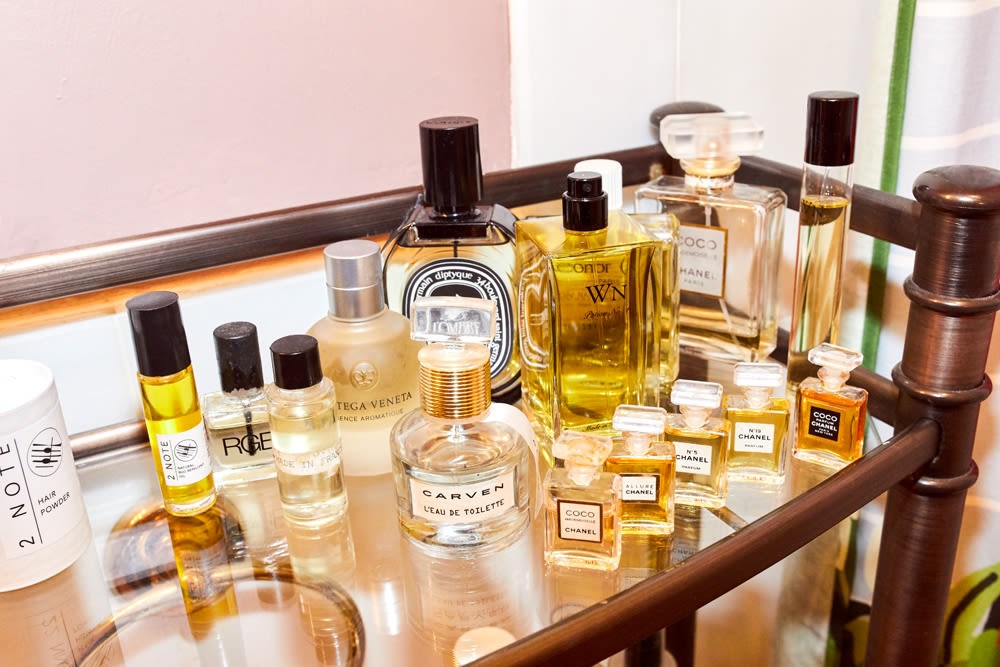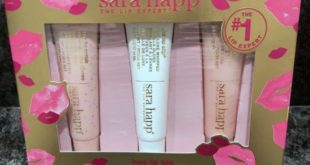
There are certain things to never do online: buy fine jewelry, for one thing, because I’m not the wife of a Texan oil tycoon. Bras need to be fitted, foundations need to be matched, apartments need to be toured. In normal circumstances I’d also never buy perfume without smelling it first. But the fact that you can’t head to your local beauty counter for a smell-headache right now shouldn’t stop you from indulging in a beautiful new scent. Surely I thought, there must be a way to make buying perfume sight-unseen… doable?
To get some answers, I reached out to fragrance developer Cristina Bonati. Some background: Bonati studied at ISIPCA, the world-leading French perfumery school founded by Jean-Jacques Guerlain. (Yes, that Guerlain.) After graduating Bonati nabbed a job at Mane, a globally renowned fragrance house that makes private label scents for well-known (yet confidential) brands. She has also worked behind the scenes at Glossier. “I have always loved the way something as simple as a scent can carry you on a journey of endless discovery,” says Bonati, who tells me there’s no reason to be afraid of fragrance shopping online. Below, find her best tips for buying something you love.
Read up on each note
If you see an unfamiliar word in a fragrance description, Google it. Bonati suggests starting out on Fragrantica, a comprehensive online scent library where you can look up single fragrance notes. “They give you a description as well as a list of fragrances that contain that note so you can see if you’re familiar with any of them,” she explains. Another approach is to check out reviews that real people (not marketers) have written. Solinotes makes single-note fragrances, so reviews of their scents are essentially reviews of specific fragrance notes. Finally, says Bonati, “It might also be useful to think about if you’ve already met a note in a specific landscape, your childhood, or cooking.” Not only will this help you figure out what a note smells like, it’ll also help you understand the emotion it conveys. Ingredients can smell happy, calming, energizing, seductive… “I used to live in a village by the sea, so I know fragrances with ozonic, salty notes bring up happy memories for me,” she adds.
Understand how each note fits into the larger fragrance
Bonati explains that checking out each note’s placement in the olfactive pyramid (top, middle, and base notes) can help you put the puzzle pieces together. “You can smell smaller, more volatile molecules immediately but they fade away quickly,” says Bonati. Those are top notes—they’re there to pull you in and make a good first impression. “Base notes are the most representative of how the fragrance will smell as you wear it for a long period of time,” she says next, which is why you might have heard the common advice to “live with” a fragrance before. “But really,” says Bonati, “a fragrance is mostly characterized by its middle notes.” These don’t fade as quickly as top notes but don’t sit as close to the skin as base notes either—essentially, you smell them strongly for longer. If you know you don’t like a fragrance’s middle notes, you probably won’t like the scent.
Check the subfamilies
Now you know what every note in a fragrance smells like. You even know how much of each note you’ll get with each whiff. But how do you figure out what they all smell like together? “Reading fragrance families and subfamilies together will help you understand the main olfactive profile of a scent,” says Bonati, but let’s back up a bit. A fragrance’s family is derived from the middle notes, which you just learned are the most important part of a fragrance. (Sometimes they’re even called the heart notes.) Subfamilies are indicated by top notes, which can slant the middle notes citrusy, salty, or spicy. That’s why Bonati says it’s important to look at both. “For example, even though they’re both in the floral family, if your favorite fragrance is a heady jasmine you might not like a citrusy gardenia. The first is opulent and rich, while the second one is delicate and ethereal,” she explains. Basically, the subfamily gives you more precise information—and if it doesn’t say it on the fragrance’s webpage, you can find a fragrance’s family and subfamily on Fragrantica, too.
Communicate with the brand
“You can always get in touch with brands on social media to ask for more information,” says Bonati. You’ll be communicating with a real person who knows the fragrances well, which is especially helpful when you know you want to shop a certain brand but don’t really know where to start. They’ll be able to narrow down the range based on what you’re looking for, and might also offer shortcuts to understanding each scent. When you think you know which one you want to buy, try asking them to describe it in their own words—not only will their description be more accessible than the one on the site, but they’ll also be able to compare it to other scents in the range. (For example, they might tell you scent A is softer than scent B but brighter than scent C, or something like that.)
And if you’re really not sure, start with a sample
Sure, it’s an extra step. But ordering samples lets you try out different fragrances without committing to something you might not like. Many brands offer lower-priced sample sets of their entire collection, and some let you apply the price of the samples to a full-sized bottle later. (After you buy the sample flight, they’ll send you a coupon that’s good to use within a certain amount of time.) If you’re looking to gift fragrance, a sample set and a gift card for the price difference is a safe bet—plus, it’s a lot more thoughtful to your giftee’s tastes. If the brand you’re looking to try doesn’t sell samples, try a website like Luckyscent. They offer hard-to-find discovery sets, sample edits by fragrance family, and single samples priced from $ 3 to $ 8 each. Or, if you feel comfortable, mask up and visit Sephora or a beauty counter. Sales associates can make small samples of anything the store sells—it’s not uncouth to ask, and once you get the scent home you can bare-nostril it to your heart’s content. The one thing you don’t actually have to worry about is the way scent tends to change based on skin chemistry. Reassures Bonati, “If you want a fragrance to stay true to itself, you can always just spray it on your clothes.”
—Ali Oshinsky
Photo via ITG



